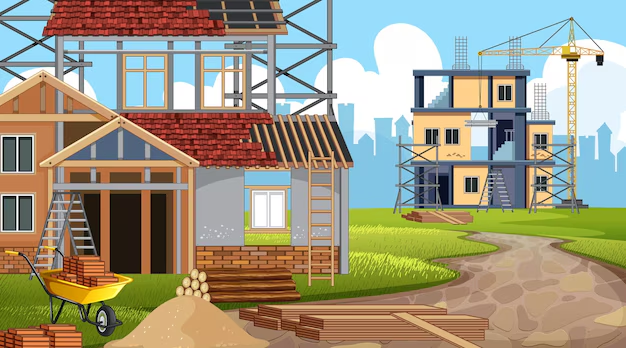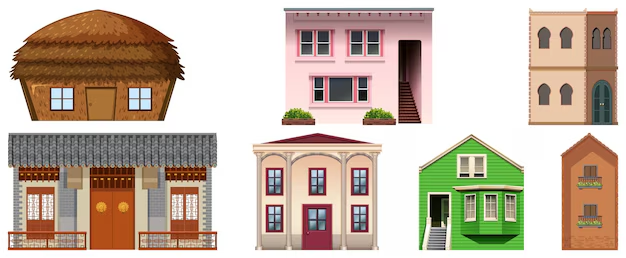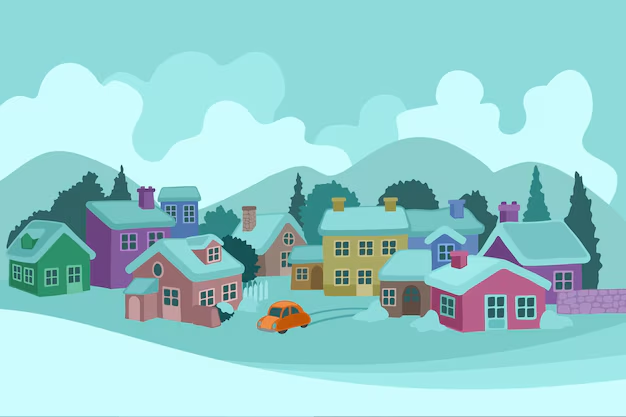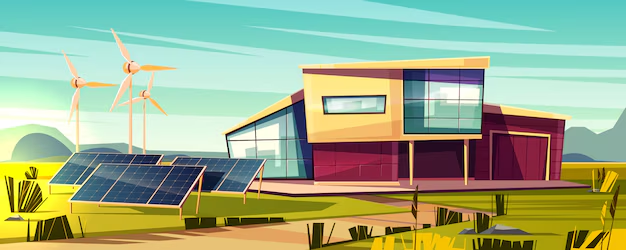The World in My Home – Compelete Guide For Class 4 EVS Chapter 22
Welcome to iPrep, your Learning Super App. Our learning resources for Chapter 22, “The World in My Home,” in Class 4 EVS are meticulously designed to ensure students gain a comprehensive understanding of this essential topic. These resources include detailed notes, interactive exercises, and practical examples that cover the entire spectrum of key concepts. From fundamental principles of how homes are constructed using various materials to exploring the cultural and environmental factors that shape them, the resources provide a well-rounded view.
Additionally, visual aids such as diagrams and tables are incorporated to reinforce learning and ensure that students grasp the relationship between the materials used in homes and their sources. The activities also encourage students to reflect on their own homes and consider how they are connected to the broader world around them.
The concept of “The World in My Home” in Class 4 EVS delves into the foundational principles of life by exploring the essential characteristics that define how our homes are shaped by the world around us. It emphasizes the interconnectedness of global resources and how materials used in constructing our homes come from various regions, cultures, and natural environments.
This chapter helps students understand that the materials in their homes, whether it’s wood, clay, or glass, are part of a larger, shared ecosystem. It also highlights the role of climate and geography in influencing the design and structure of homes across different parts of the world. Through this, students gain a deeper appreciation of how human life and the environment are intricately linked in the creation of homes.
Objectives of Learning The World in My Home
By studying Chapter 22, The World in My Home, in Class 4 EVS, students will:
- Understand the diverse materials and resources used in building homes and their sources.
- Explore how environmental factors like climate and geography influence the design and structure of homes.
- Develop an appreciation for the cultural and regional variations in housing styles.
- Learn about the interconnectedness of global resources and sustainable practices in home construction.
- Reflect on their own homes and the broader world, fostering a sense of curiosity and responsibility towards the environment.
Let’s now start the chapter – The World in My Home by understanding the concept of home.
Introduction to the Concept of Home
The chapter – The World in My Home mentions that a home is much more than just a place to live. It’s a space where we experience warmth, love, safety, and comfort. But did you know that homes also reflect the materials and resources of the world around us? This chapter explains how our homes are made up of materials that come from different parts of the world, how our environment influences what we use to build our homes, and how we interact with the world through the things in our homes.
From the roof to the floor, the furniture to the walls, each part of a home tells a story of resources, craftsmanship, and culture.
The Materials Used in Building Homes
Further in Class 4 EVS Chapter 22 – The World In My Home we’ll understand the concept of the materials used in building homes.
1. What are the Different Materials Used in Homes?

Every home is made up of various materials, and these materials come from different parts of the world. Some common materials used in building homes include:
- Wood: Used for flooring, windows, and furniture.
- Bricks: Used for constructing walls and foundations.
- Cement: Used in constructing floors, walls, and ceilings.
- Glass: Used for windows.
- Metals: Used for roofing, plumbing, and electrical wiring.
But these materials do not come from one place alone. Let’s see where they come from.
2. Sources of Materials Used in Homes
| Material | Source Location | Example of Use |
| Wood | Trees (Forests) | Flooring, furniture, beams |
| Bricks | Clay (from the earth) | Walls, foundations |
| Cement | Limestone, sand, and clay | Floors, walls, roofs |
| Glass | Sand (processed into glass) | Windows, glass doors |
| Metals | Mines (Iron, Copper, Zinc) | Roofing, pipes, wires, grills |
3. The Global Connection
The materials used in our homes may come from all over the world. For example, wood can come from forests in India, Africa, and North America, while bricks are often made from local clay. Even the glass that makes our windows could come from sand found in deserts, like those in Africa or the Middle East.
This global trade of materials shows us how interconnected the world is. Products made from different countries come together to form the very structure of our homes.
The Types of Homes We Live In
Homes vary greatly depending on where we live, the climate, and the materials available to us. In this chapter- The World in My Home, we explore some different types of homes found around the world.
1. Traditional Homes

In many parts of the world, homes are made using traditional methods and materials. Here are a few examples:
- Mud Houses: In rural areas, especially in parts of Africa and India, mud houses are common. These homes are made using locally available mud, clay, and thatch.
- Wooden Houses: In colder regions, like the Northeast of India, houses are often made of wood because it keeps the house warm.
- Thatch Roofed Houses: In areas with a tropical climate, houses with thatched roofs are common. The roofs are made of dried grass, which keeps the house cool.
2. Modern Homes

Modern homes often use cement, glass, and steel for construction. These materials are widely available and offer strength and durability.
- Apartments and Flats: In urban areas, many people live in high-rise buildings and apartments made of concrete, glass, and metal.
- Bungalows: In suburban areas, people may live in bungalows made of bricks and cement.
How the Environment Affects Homes
Let’s go further in the chapter “The World in My Home” and understand the concept of how the environment affects home.
1. Climate and Its Effect on Homes

The climate of a region plays a crucial role in determining the type of materials used in building homes. Let’s look at how homes are affected by the climate:
Climate Type Type of Home Material Used Cold (e.g., Europe, North America) Wooden houses, igloos Wood, stone, ice Tropical (e.g., India, Southeast Asia) Thatched houses, huts Bamboo, grass, mud Hot and Dry (e.g., deserts) Flat roofs, mud houses Mud, clay, stone Rainy (e.g., coastal areas) Raised houses, cottages Wood, cement, iron, steel
2. How People Adapt to Their Environment
People have learned to adapt their homes to suit the climate of their surroundings. In cold areas, homes are built with thick walls and slanted roofs to keep the heat inside. In hot areas, houses are made with materials like mud or clay, which absorb heat during the day and cool down at night, keeping the temperature inside comfortable.
The World Beyond the Home
Now going further in the chapter “The World in My Home”, let’s explore the world beyond the home.
1. The Impact of Our Homes on the Environment
Homes also have an impact on the environment. From the materials we use to the way we dispose of waste, every action we take in our homes can affect the planet.
- Energy Use: The way homes are designed, built, and maintained affects the energy used for heating, cooling, and lighting. For example, homes made with insulating materials require less energy to stay warm.
- Waste Disposal: Waste generated at home, like food scraps, plastic, and paper, needs to be disposed of responsibly to avoid harming the environment.
2. Sustainable Homes

Sustainability is becoming an important aspect of home construction. Sustainable homes use materials and practices that are good for the environment. For example:
- Solar Panels: Some homes use solar panels to harness energy from the sun.
- Rainwater Harvesting: Collecting rainwater to use in the house is a common practice in many homes around the world.
- Recycled Materials: Homes made from recycled materials help reduce waste and lessen the environmental impact.
Conclusion
Chapter 22, The World in My Home, in Class 4 EVS is more than just a lesson about houses; it’s an exploration of the connections between our homes and the world around us. By studying this chapter – The World in My Home, students learn how materials like wood, clay, and glass—sourced from different regions—come together to build the spaces we live in. They also gain insights into how climate, culture, and resources shape the types of homes people create across the globe.
Through The World in My Home in Class 4 EVS, students discover the impact of sustainability and environmental awareness on home construction. This chapter fosters an appreciation for the intricate link between human life and nature, highlighting the significance of designing homes that respect both tradition and the environment.
By engaging with the lessons of The World in My Home, Class 4 students develop a deeper understanding of how the world’s diversity and interconnectedness influence even the most personal aspect of their lives—their homes. Let this chapter inspire curiosity, reflection, and a newfound respect for the global story behind every home!
Practice questions on Chapter 22 - The World In My Home
Get your free Chapter 22 - The World In My Home practice quiz of 20+ questions & detailed solutions
Practice Now








